Just south of Nanaimo, the Cable Bay Trail is a short hike that leads through a beautiful forest of large bigleaf maples and douglas fir which form a dense canopy over the trail. It’s a beautiful walk through nature, but it’s once it gets to the water’s edge that the Cable Bay Trail really shines. From here, many choose to continue along the beautiful shore all the way to a fantastic viewpoint of Dodd Narrows, a narrow channel between Vancouver Island and Mudge Island, known for its strong tidal currents.
In addition to the very pleasant views of the surrounding islands, Dodd Narrows is known for its frequent sightings of sea lions, sea otters and killer whales. If you’re in the Facebook group, it seems like almost every day that amazing wildlife sightings are reported here. While I wasn’t lucky enough to see any wildlife, I also wasn’t there too long before heading back. If you plan on sitting and enjoying the views for a while, you just might get luckier than I did.
Continue reading this blog post for everything you need to know to hike the Cable Bay Trail near Nanaimo on Vancouver Island for yourself, including distance, elevation gain, how to get there, the best time to visit, and lots of photos of my experience.
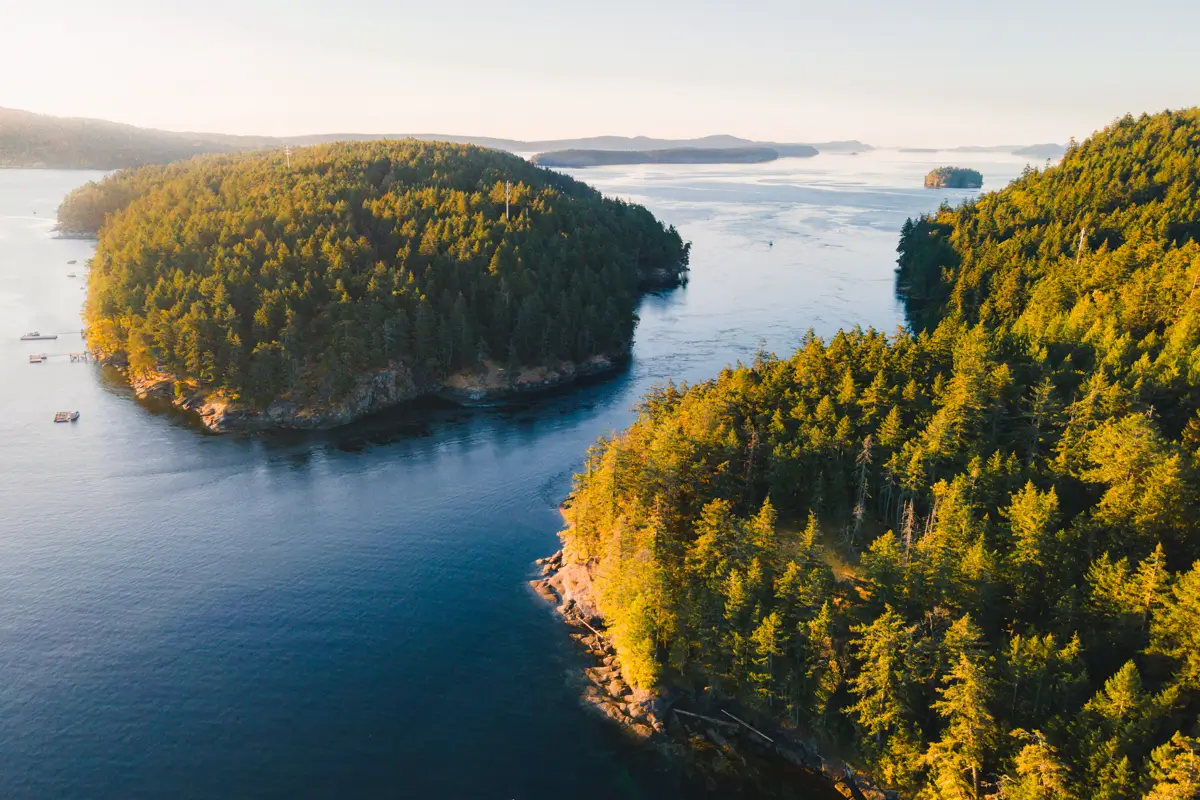
The Cable Bay Trail is under threat due to proposed developments on both sides of the trail. On the west side, Nanaimo Forest Products Limited has proposed industrial lots as close as 50 meters from the trail. On the east side, a private owner has proposed a subdivision with 34 lots and expanded roads. Get involved in the grassroots campaign to Save the Cable Bay to protect this invaluable area for future generations.
When hiking it’s important to avoid harmful practices such as disturbing plants or rock-stacking, or removing any natural object from flowers to rocks, as it’s important to leave the environment as natural as possible for the animals and for fellow hikers to enjoy in perpetuity. As many flowers as there are, there are few enough that if we all took one, then there wouldn’t be any left. Take only photos, leave only footprints.
If you haven’t heard of Leave No Trace principles, they’re also really essential to read up on before heading anywhere into the outdoors in general. Following these important principles basically means doing your best to leave beautiful places like the Cable Bay Trail and Dodd Narrows as good (if not better) than you found them, both for their preservation and for the enjoyment of other visitors.
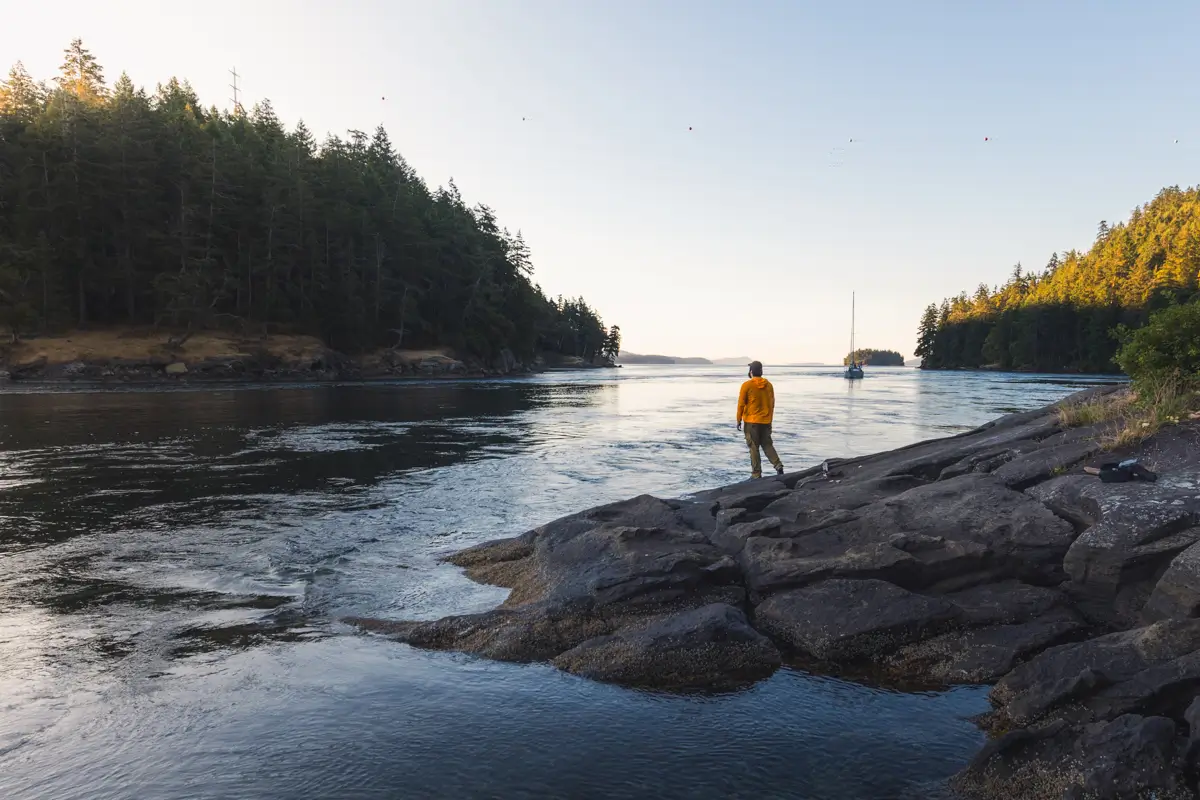
Cable Bay Trail Round Trip Details
Distance: 7 KM / 4.3 MI
Elevation Gain: 140 M / 459 FT
Hiking Time: 2 Hrs
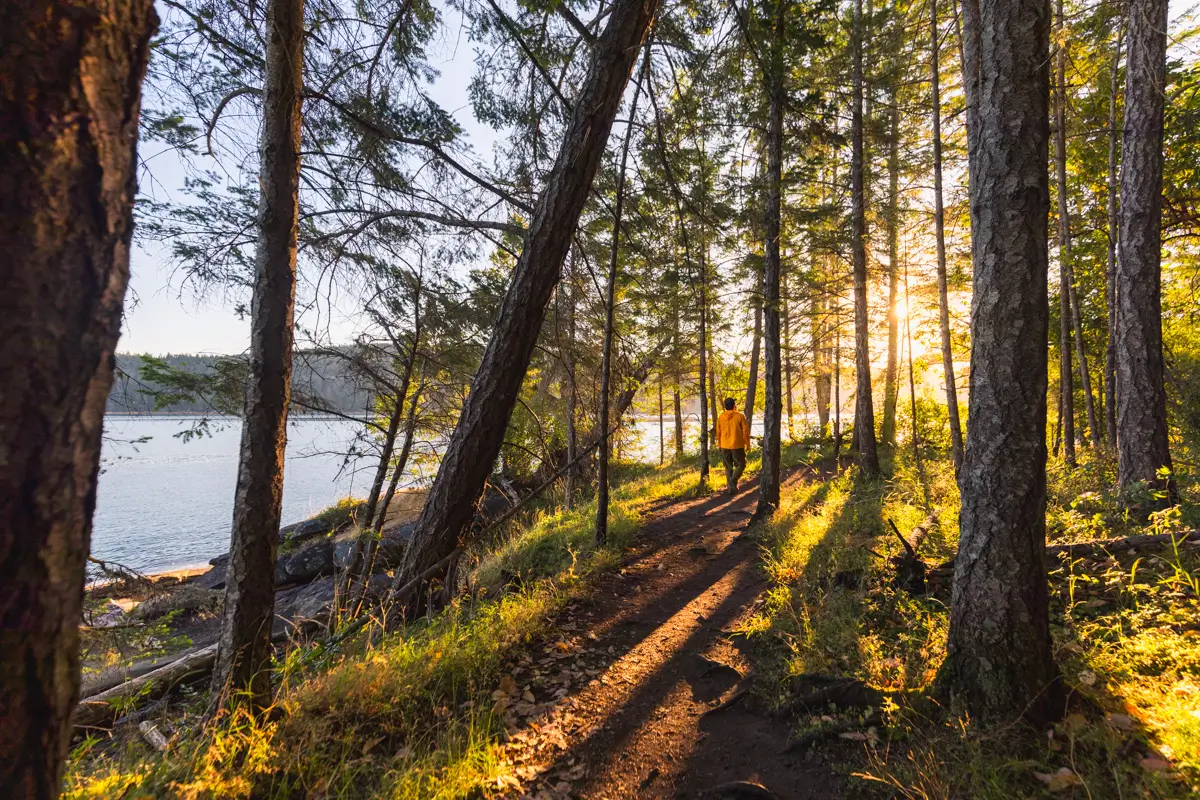
Hiking & Safety Tips
- Prepare for the possibility of wildlife encounters. There are almost no grizzly bears on Vancouver Island, but black bears are still common. Bear bells are proven to be an ineffective bear deterrent, and are even actively discouraged by Parks Canada. The best way to let bears know you’re around is simply to use your voice. Make sure to keep a respectful distance from wildlife and never feed the animals. It may seem kind but it doesn’t just kill wildlife and put people in danger, it’s also in many cases illegal.
- Research current trail conditions and make sure you are well-informed about the route before you leave, and assess if it is within your capability. Be aware of what time it gets dark and check the weather forecast. Make sure to tell someone where you’re going and when you expect to return. Every year as more and more people try hiking for the first time, the number of rescues goes up. Being prepared is the best defense.
- Pack everything you need for a successful hike, including enough water and energy-rich snacks. Remember to pack out everything you pack in though – don’t expect to find a convenient garbage can halfway up the trail. Bring appropriate layers (remember you’ll warm up once you start hiking) and sun protection. Hiking poles may be helpful but are not required. In addition to not leaving any garbage on the trail yourself, I highly recommend bringing a garbage bag and collecting any trash that you do see on the trail. You’re guaranteed to make the hike along the Cable Bay Trail a more enjoyable experience for the next person.
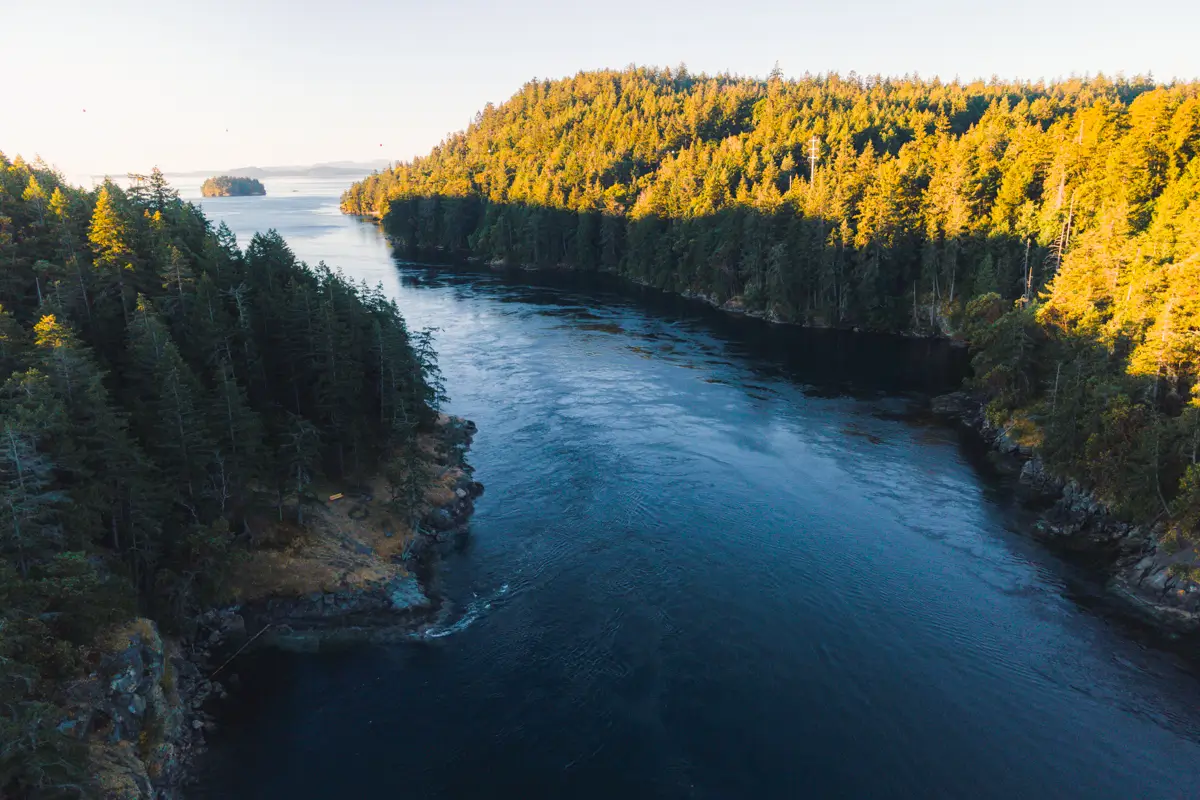
How to Get to Cable Bay Trailhead
The Cable Bay trail is about fifteen minutes south of Nanaimo, or forty minutes north of Duncan. From Downtown Nanaimo, drive south via Highway 1 for about ten minutes before taking a left turn under an overpass onto Cedar Road. Continue straight on Cedar Road for 4km, then turn right onto MacMillan Road, then your second left onto Holden Corso Road. Continue for about four minutes, following the road as it turns to the left, becoming Barnes Road. Take a left onto Nicola Road, and drive to its end, where the large parking area should be obvious. From Duncan, drive north along Highway 1 for half an hour until you pass the Nanaimo Airport on your right. Immediately after the airport, turn right onto Haslam Road. Continue straight for a minute, then following Haslam as it turns to the left and begins heading north. After a minute, keep left at the fork, continuing north now along Cedar Road. After three minutes, Cedar Road gets into town and veers to the left again, so take a right onto Woobank Road to keep heading north. Two minutes later, turn right onto Holden Corso Road. Continue for about four minutes, following the road as it turns to the left, becoming Barnes Road. Take a left onto Nicola Road, and drive to its end, where the large parking area should be obvious.
Click here to open the exact trailhead location in Google Maps.
Hiking the Cable Bay Trail to Dodd Narrows
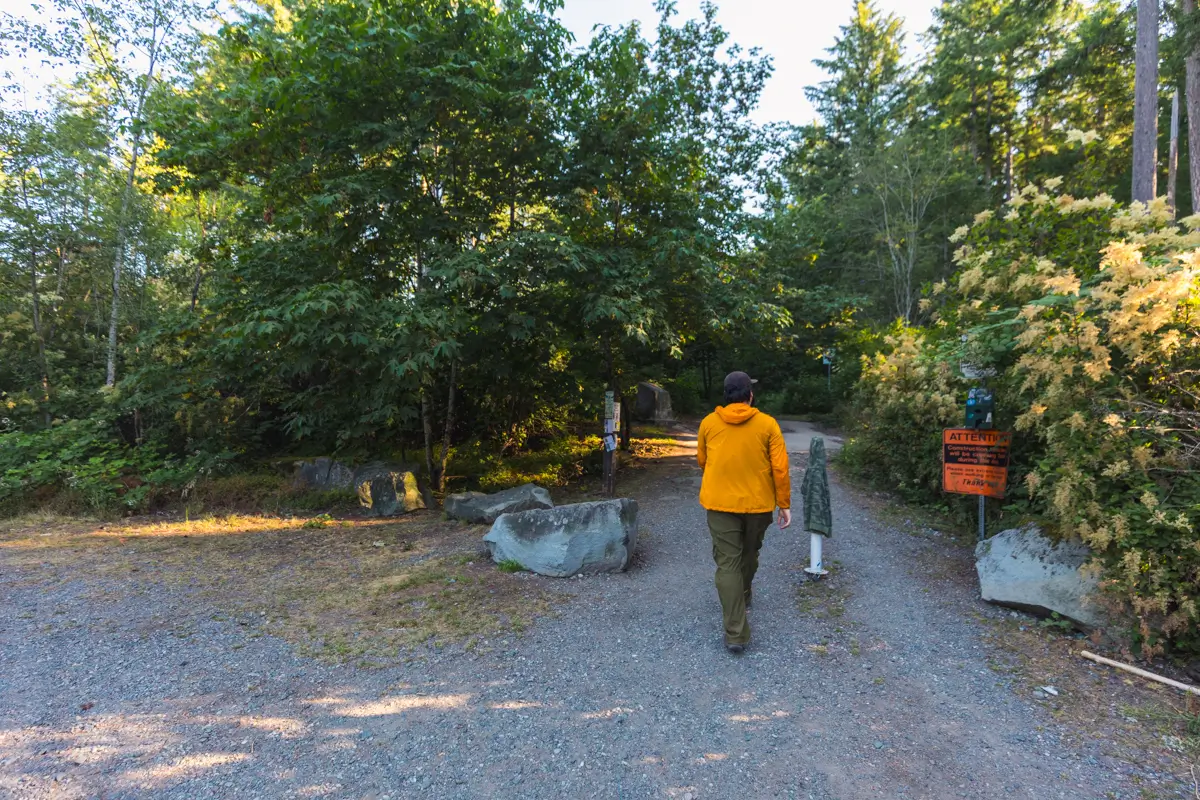
The beginning of the Cable Bay Trail.
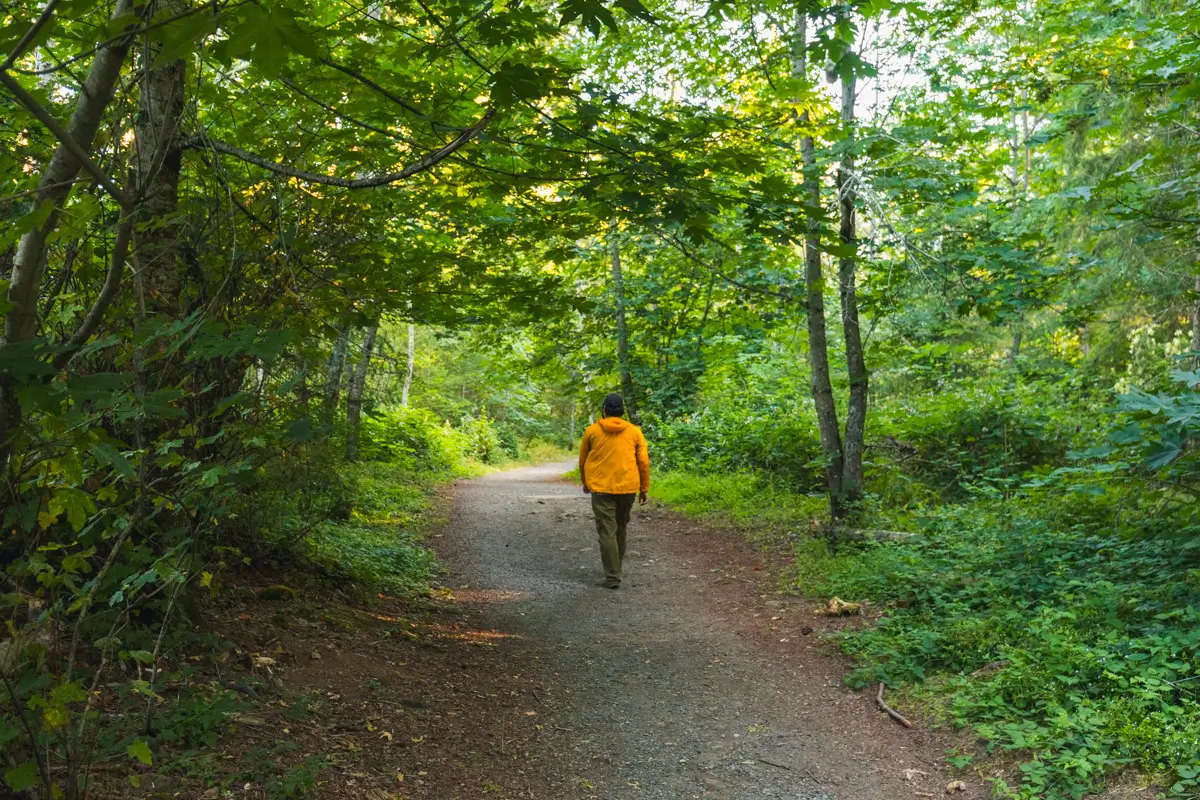
The trail is initially flat, and immediately well-forested.
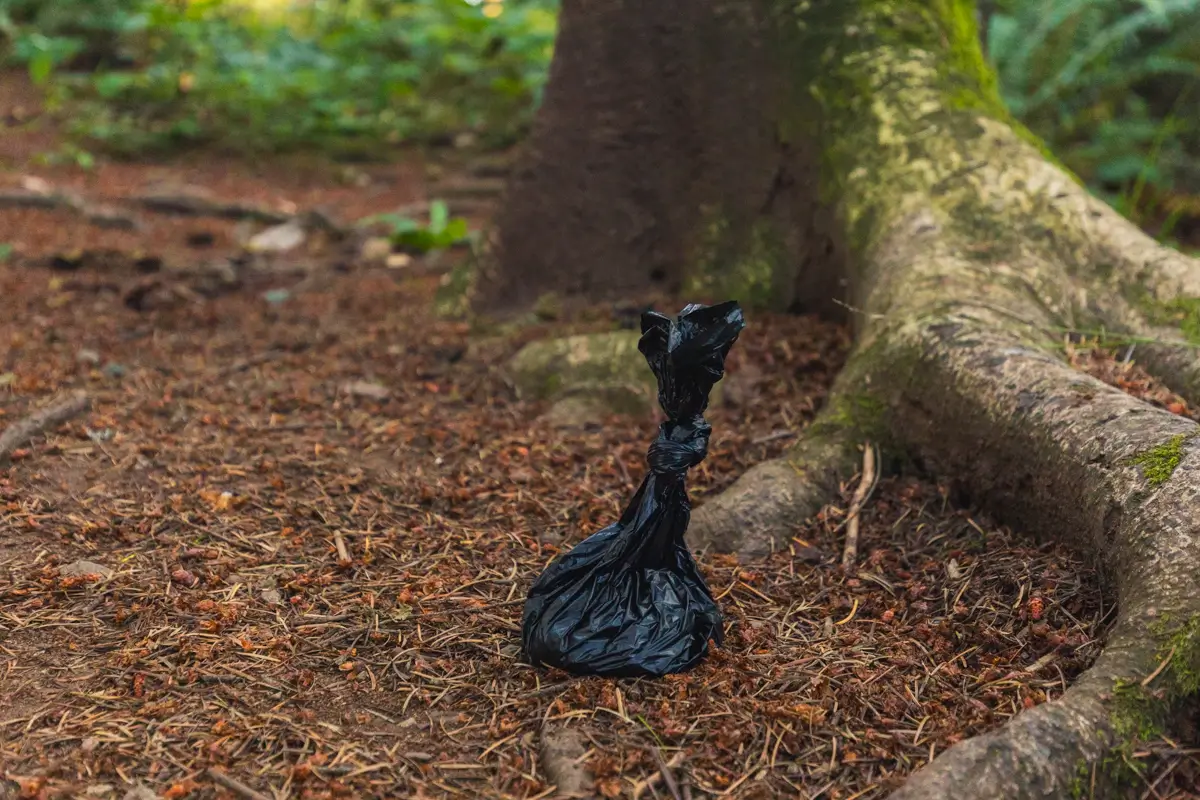
To the man walking his two dogs who thinks no one minds if he leaves bags of poo lying around where people are trying to enjoy nature: yes we do mind. What inconsiderate behaviour.
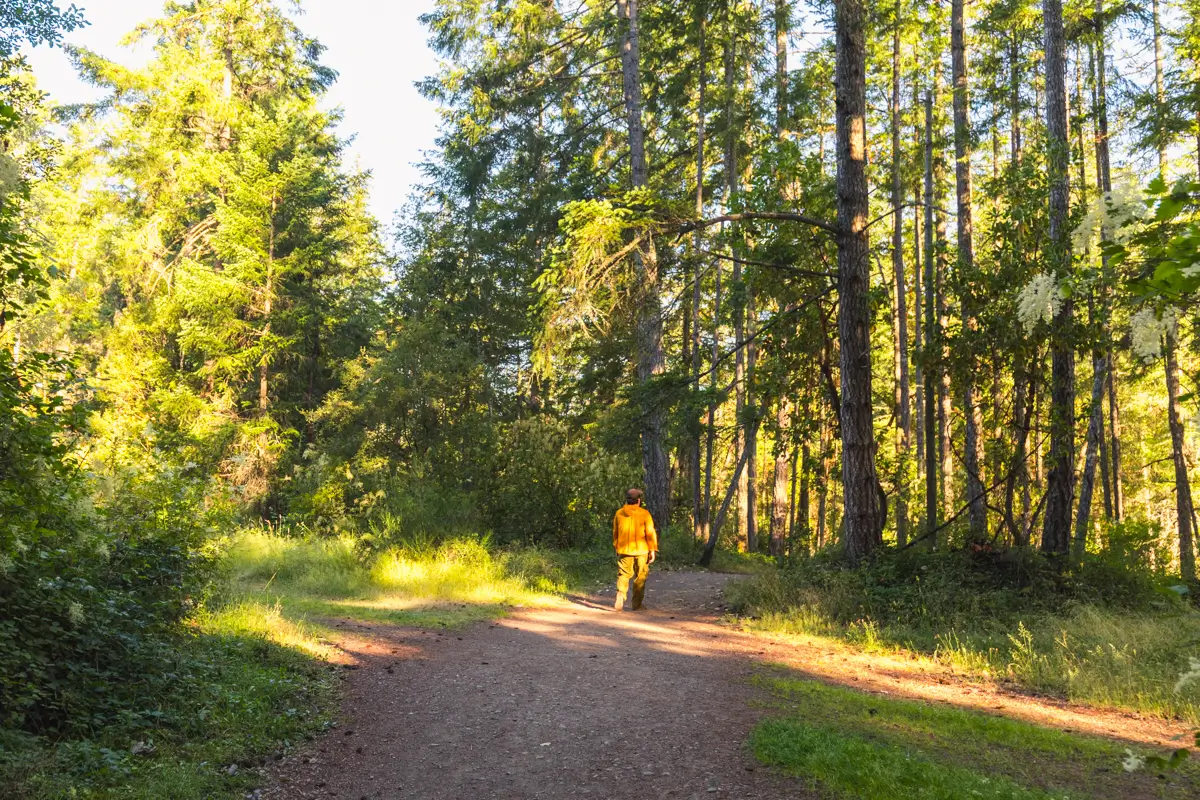
There are a couple of old roads that the Cable Bay Trail crosses early on. Ignore them, and keep straight on the obvious trail.
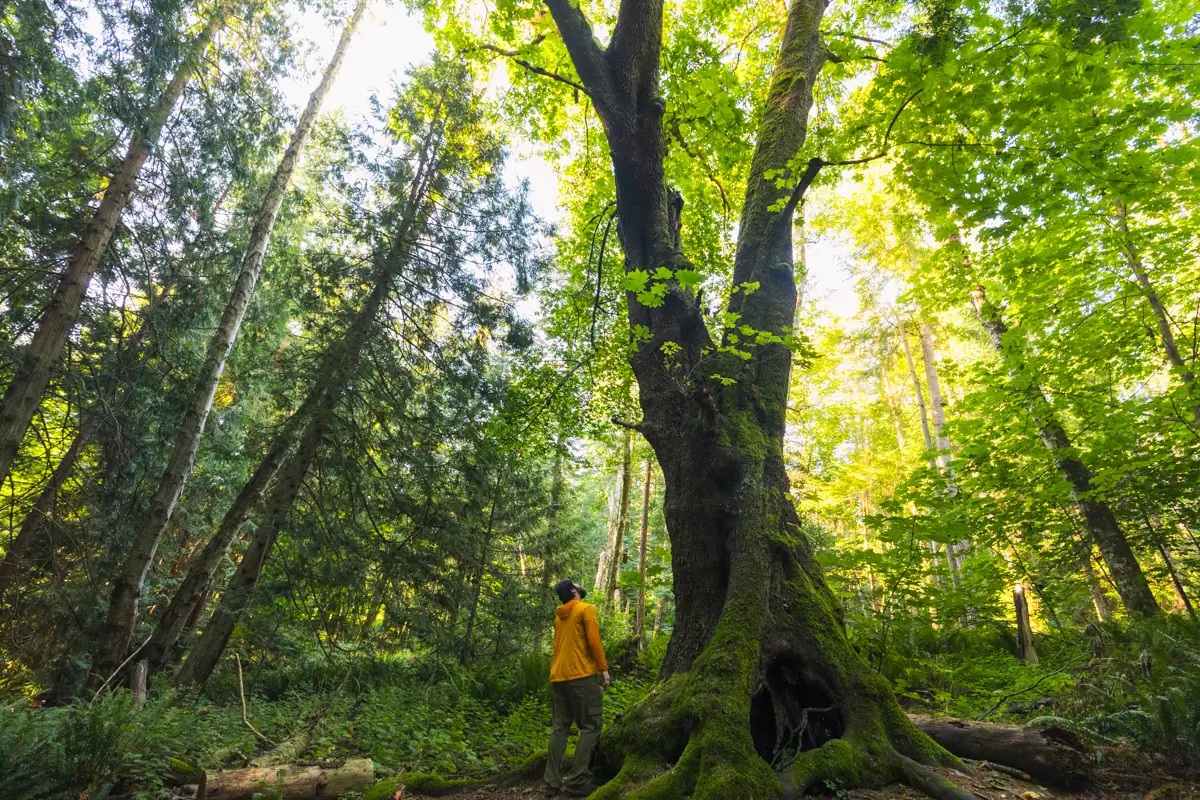
One of several notable bigleaf maples right alongside the trail. The Cable Bay Trail starts gently descending down towards the water here, following alongside a small creek.
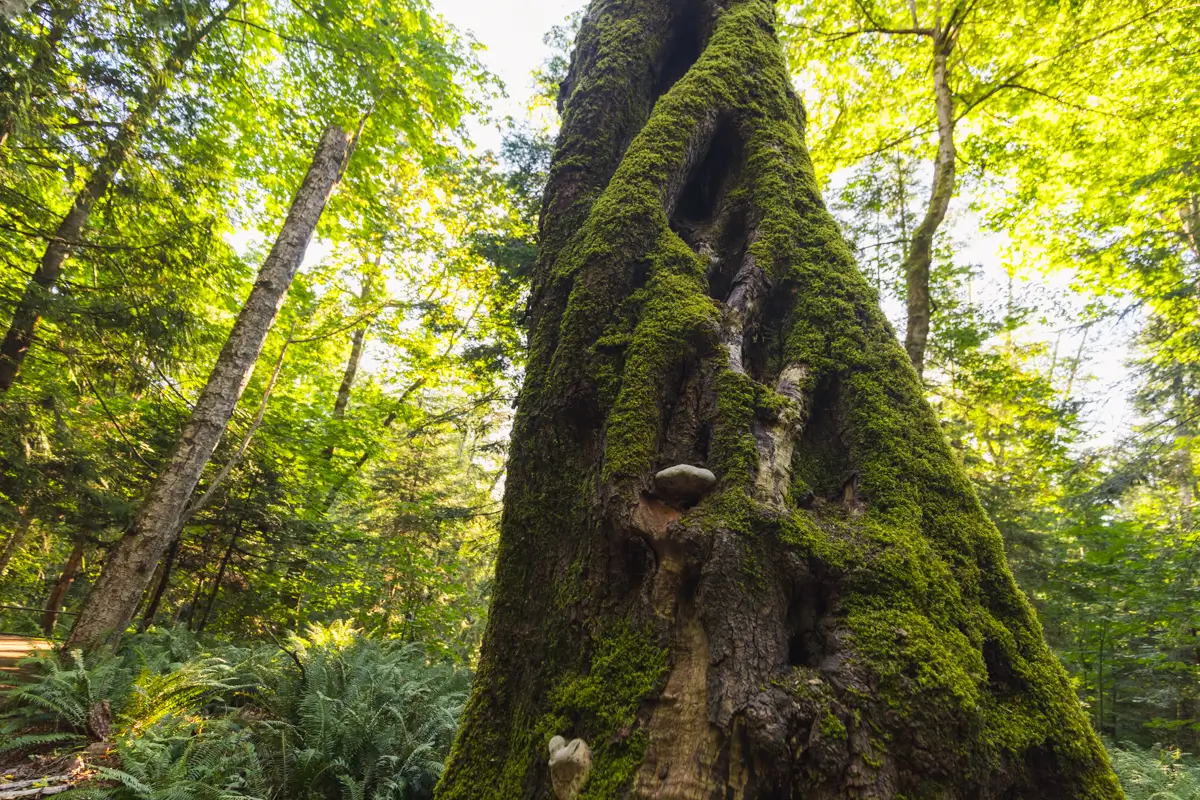
The braided trunk of this tree I also thought was of note.
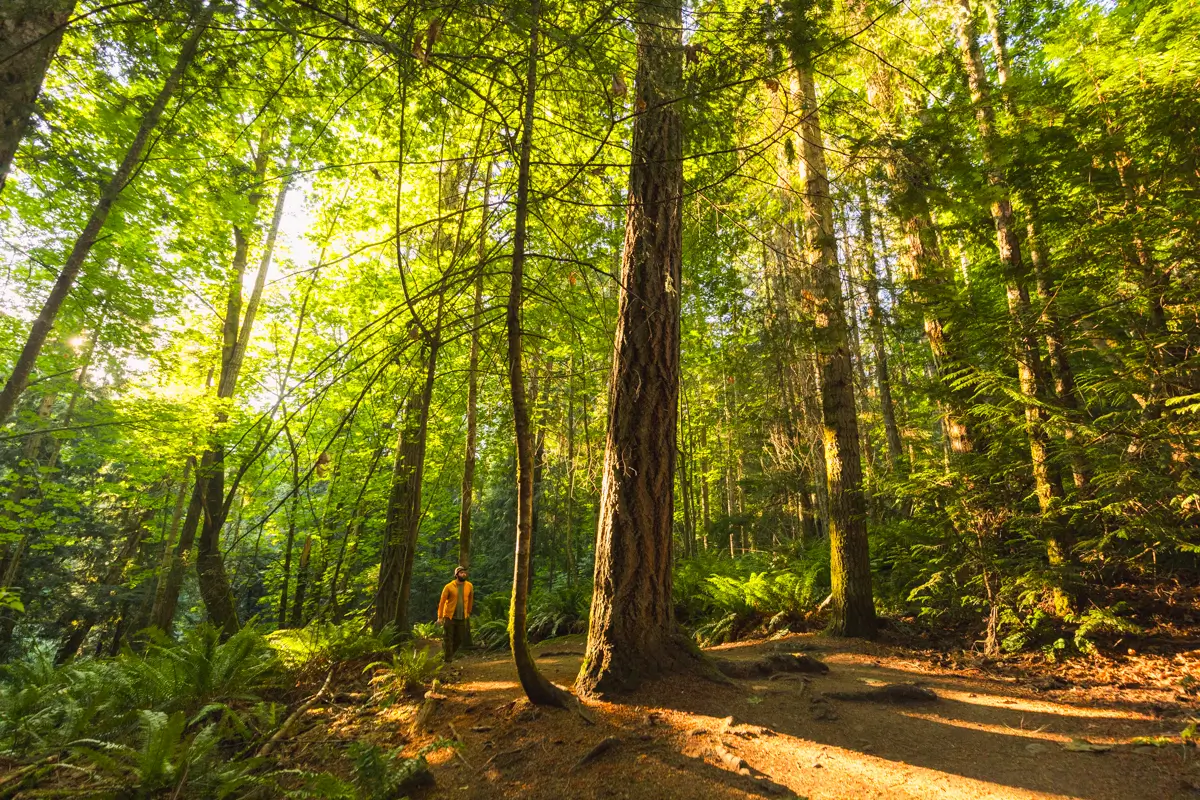
Alongside the trail are thousands of beautiful ferns. This beautiful forest really couldn’t be any more Vancouver Island.
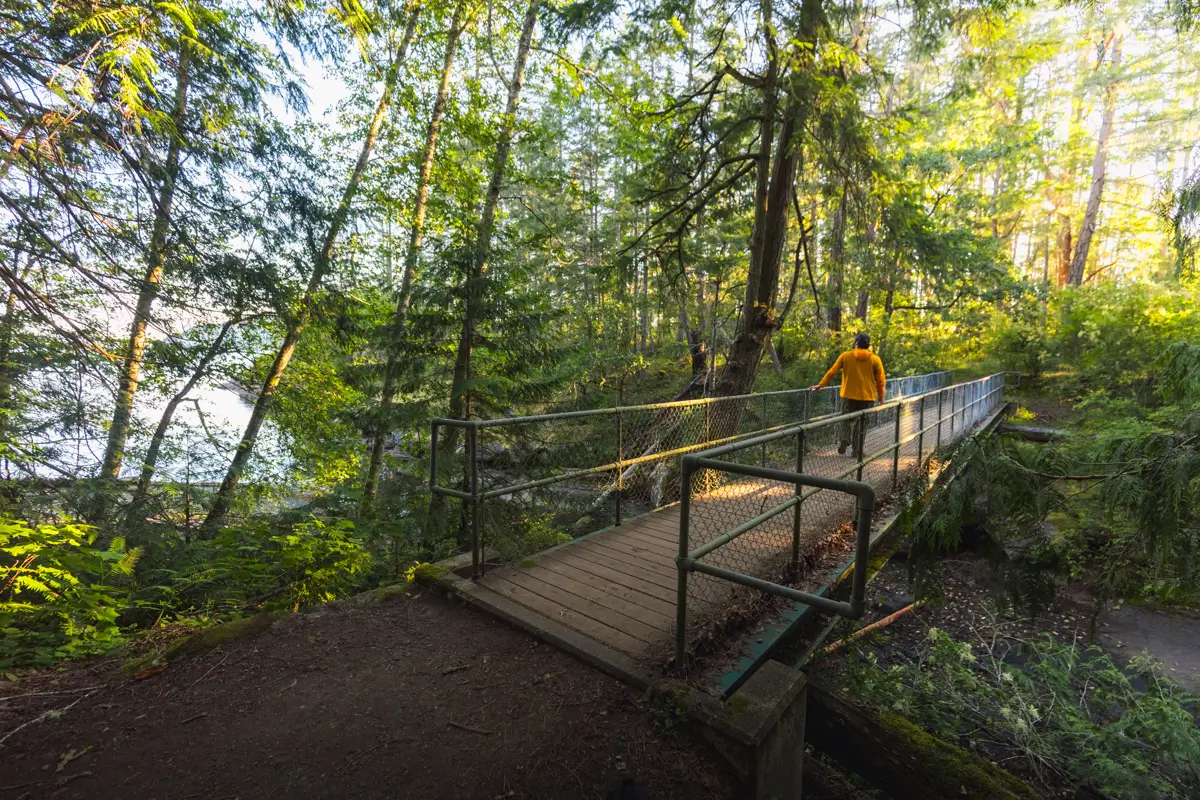
At Cable Bay. A small bridge crosses the creek, and the trail continues alongside the shore.
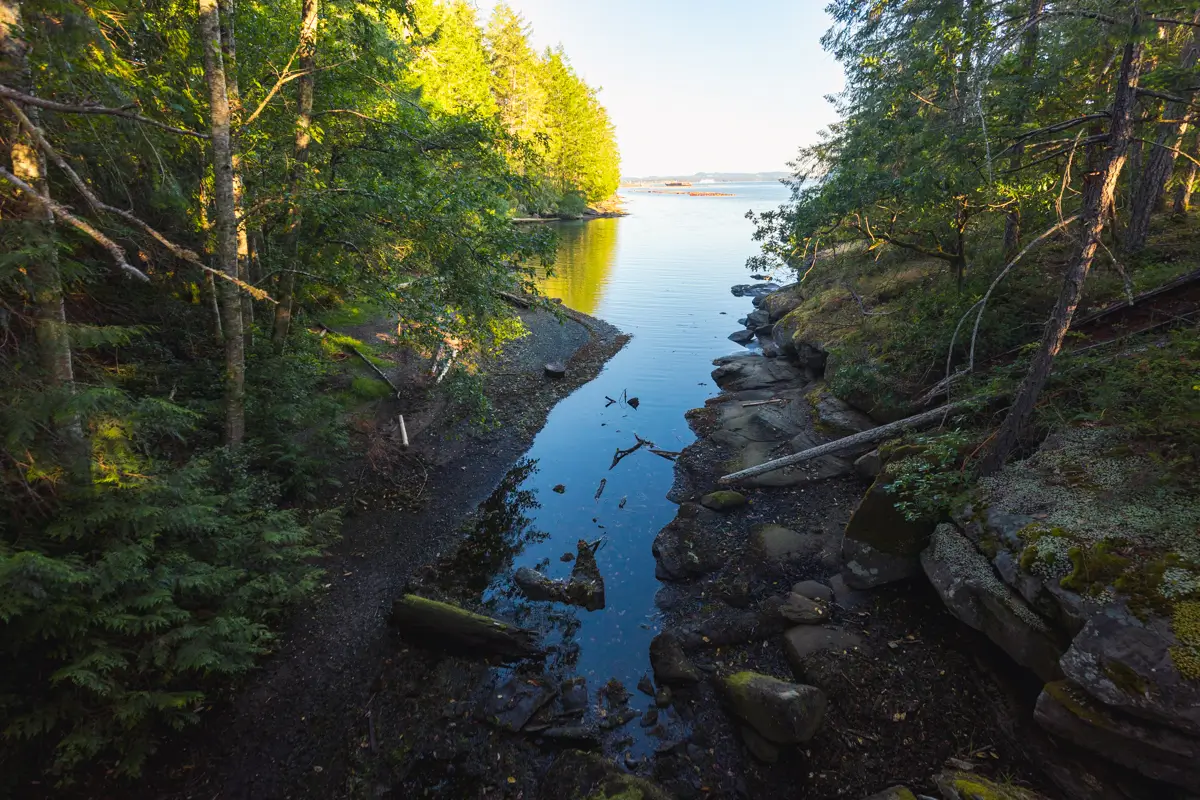
Cable Bay.
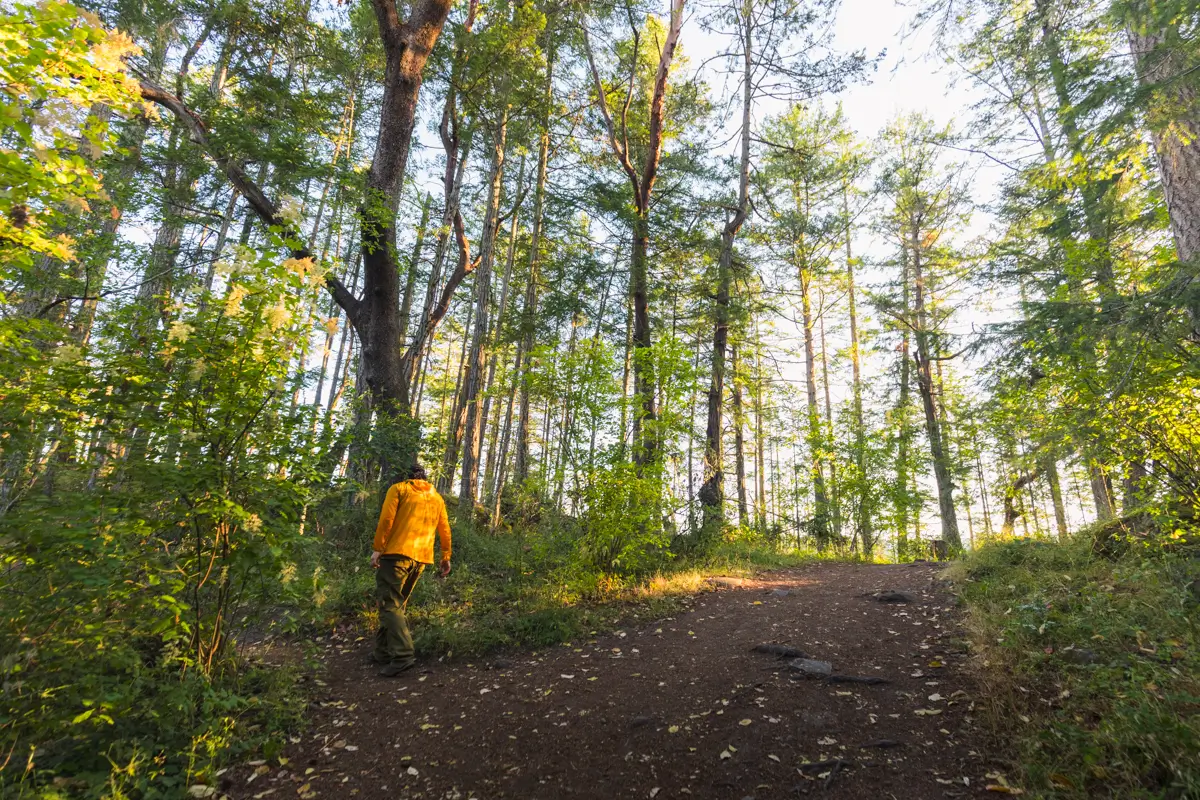
Just a minute after the bridge, I suggest taking this left to a fantastic viewpoint. It’s a short detour but well weoth it.
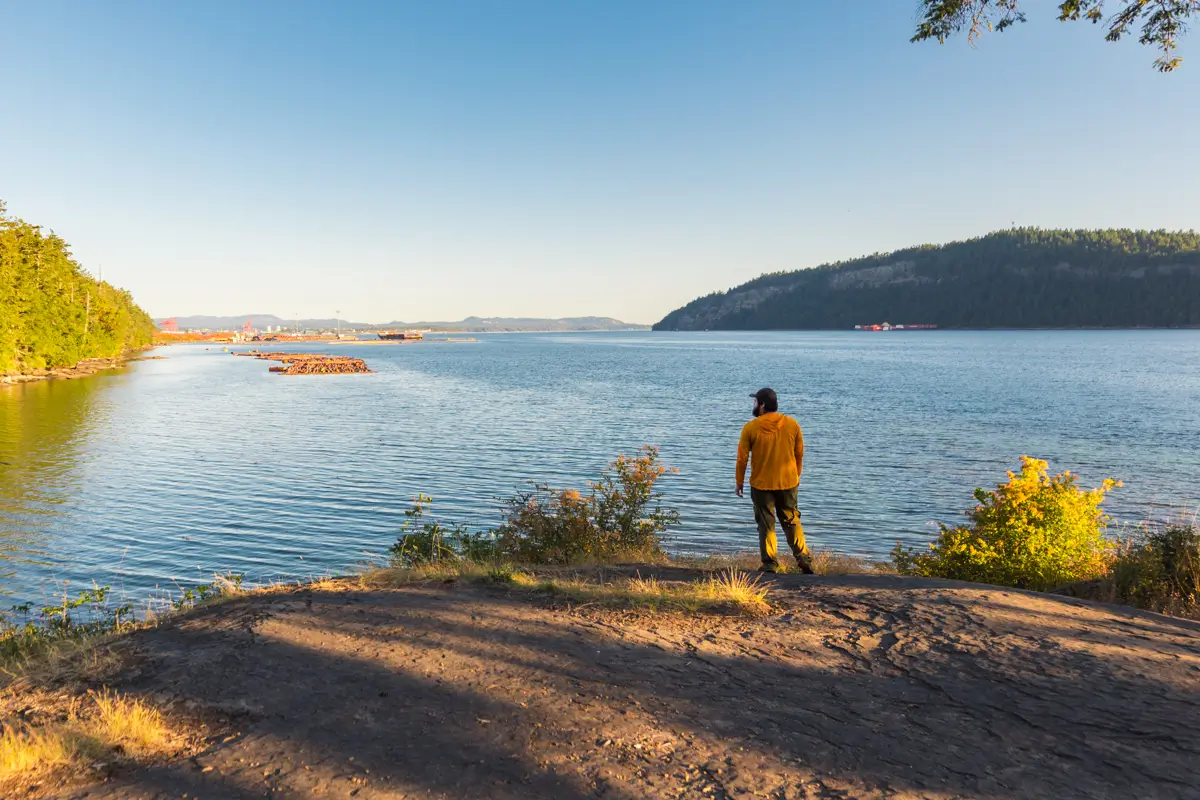
To the left somewhere is Jack Point, hidden by industrial sites. On the right is Gabriola Island.
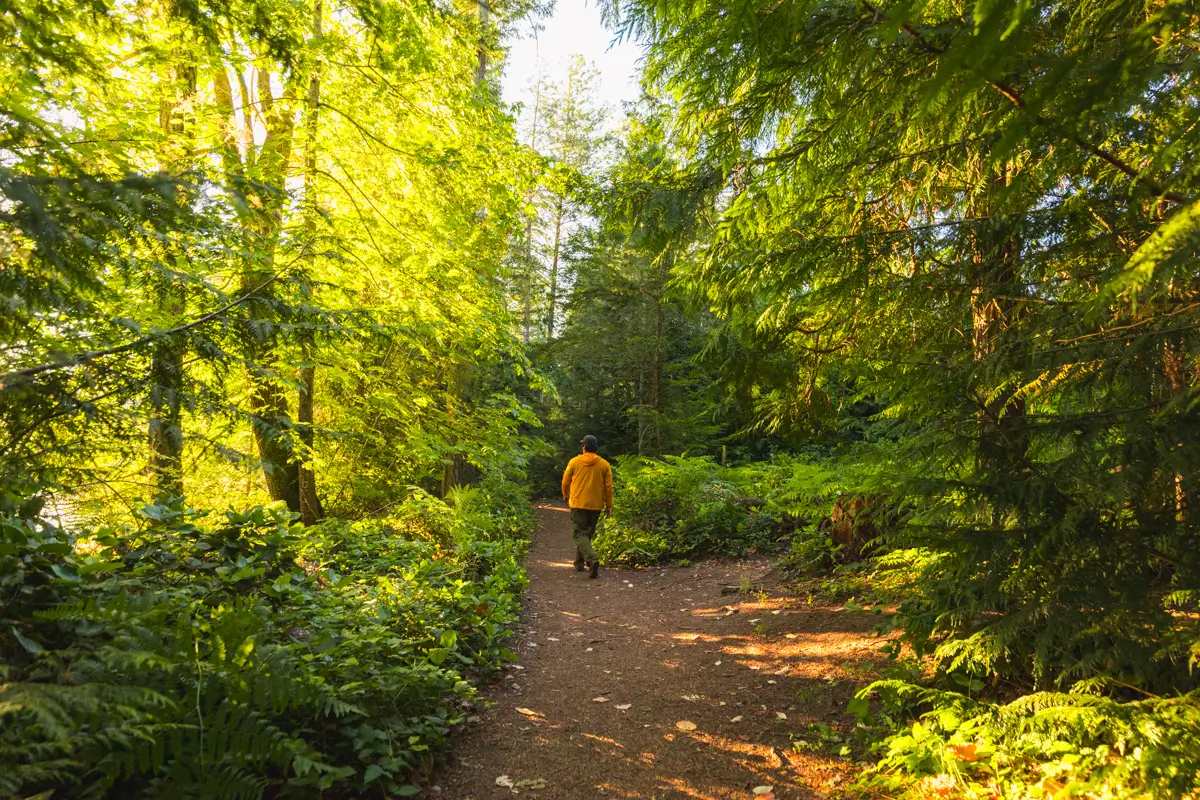
Continuing along the trail. Marked by the tree stump somewhat visible to the right of it, the trail splits in two here, with the left route continuing alongside the shore and the right trail heading through the woods. The trails reconnect at Dodd Narrows, so many people hike them as a loop.
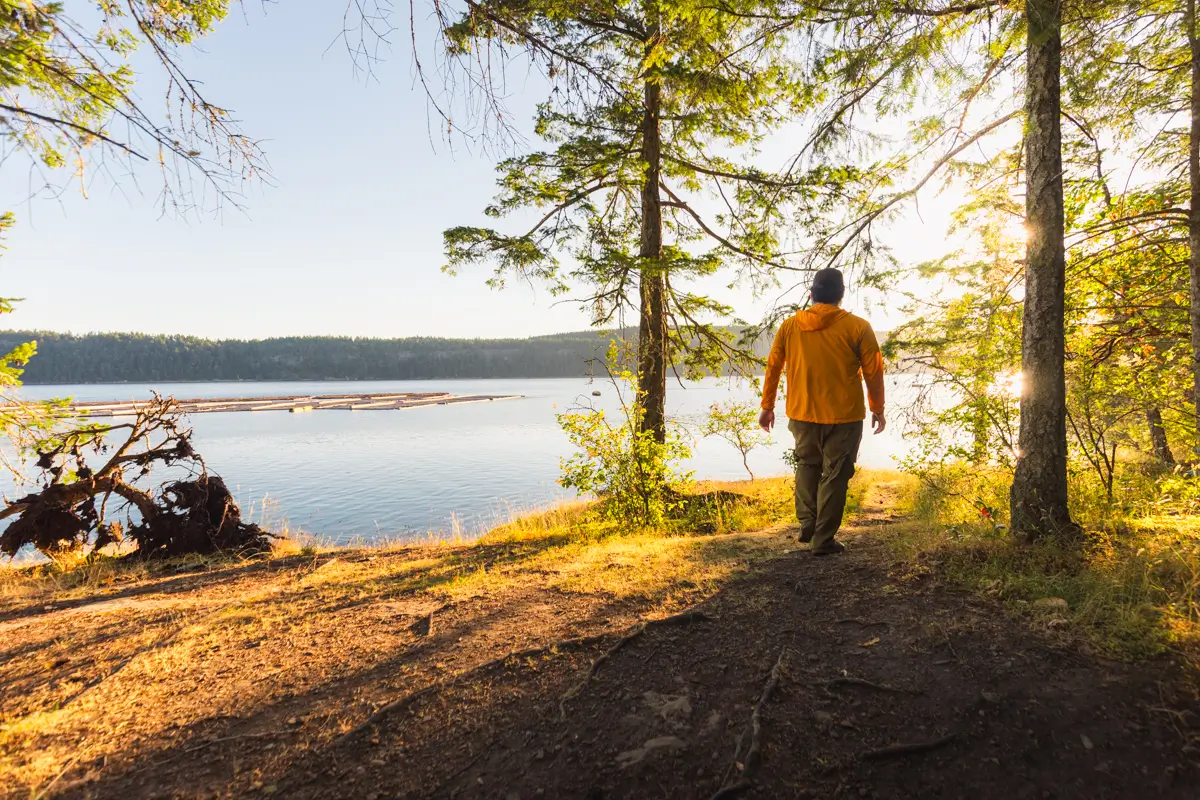
Continuing along the seaside trail, with many more little viewpoints along the way.
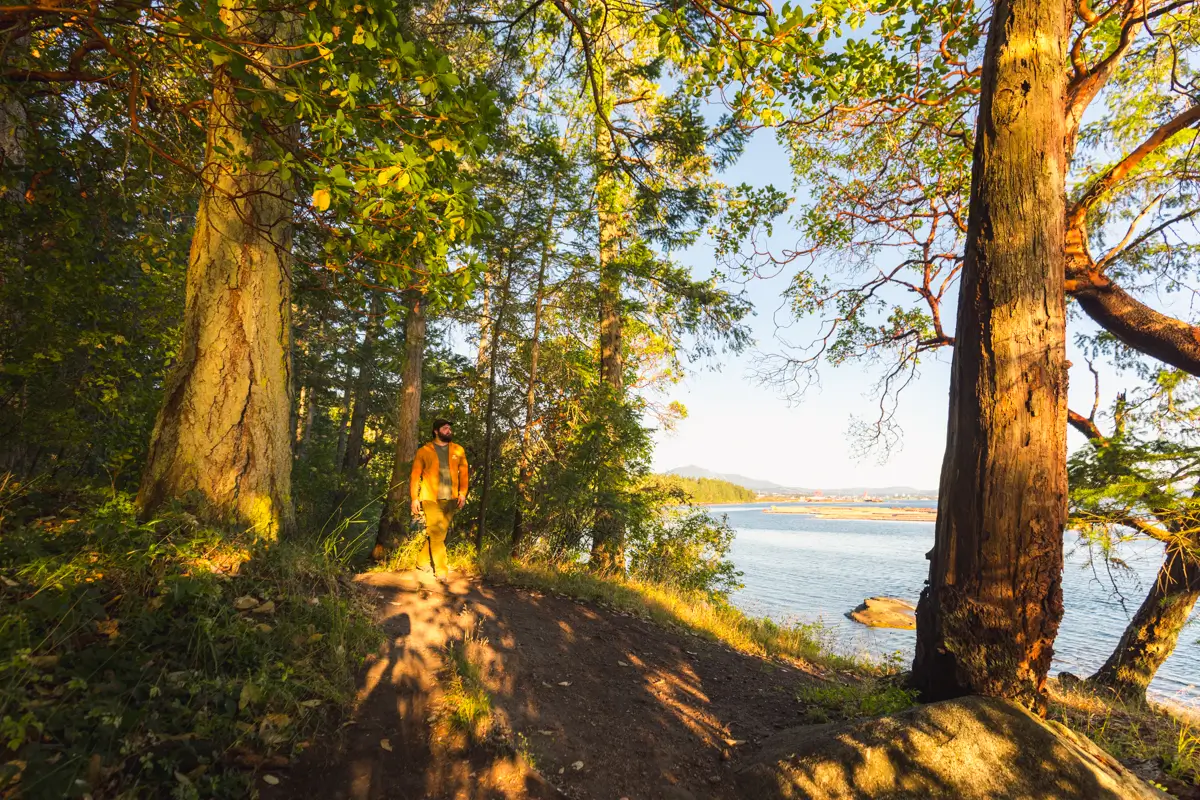
Views looking back towards Nanaimo, including a distant Mount Benson.
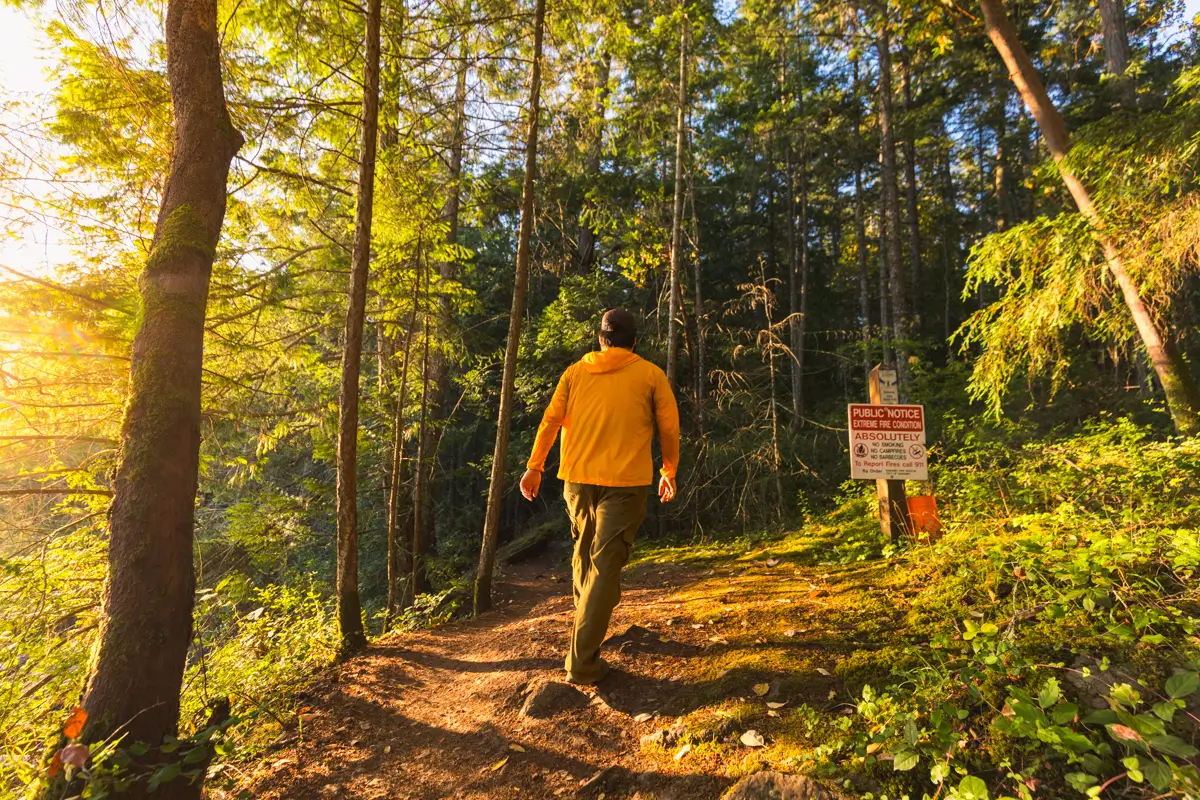
The trail enters Joan Point Park, where the Dodd Narrows Lookout is located. A sign makes clear that fires are absolutely not allowed here. This is in fact the driest area on Vancouver Island, so the risk of a fire getting out of control is high. Don’t be the piece of garbage who’s responsible for burning this beautiful forest down.
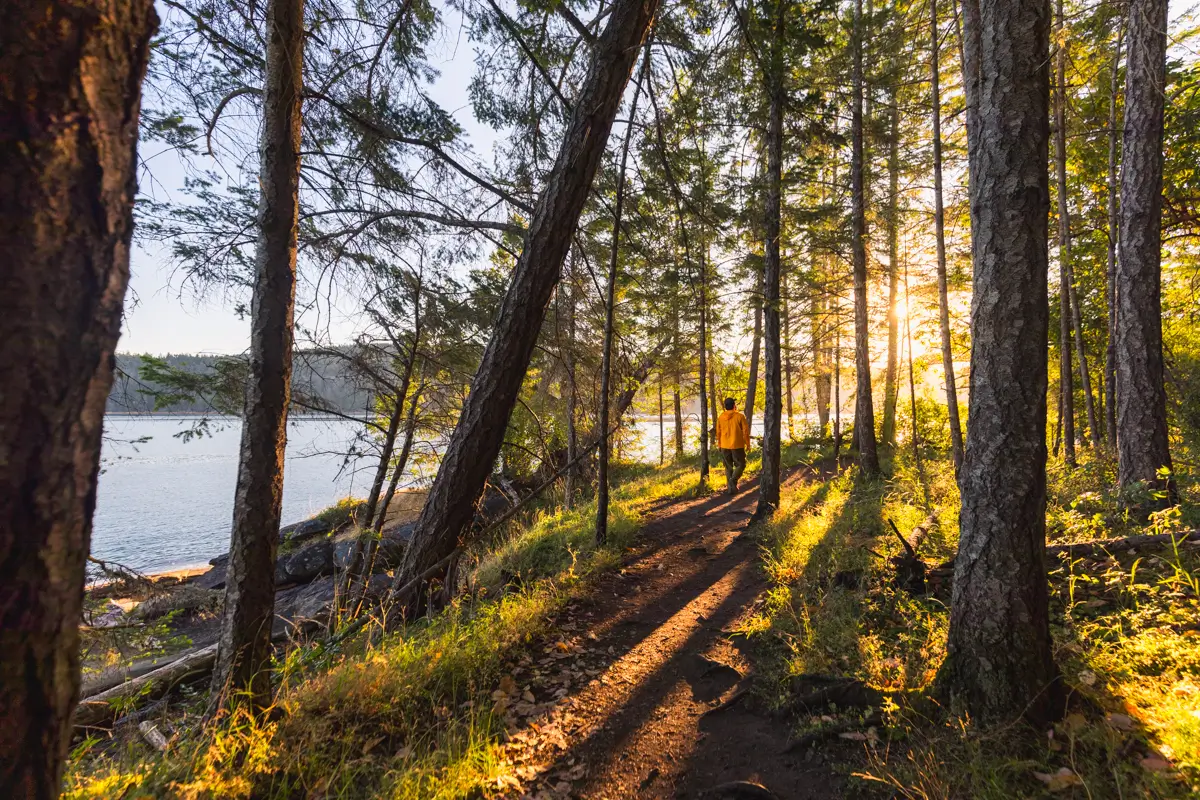
More lovely views.
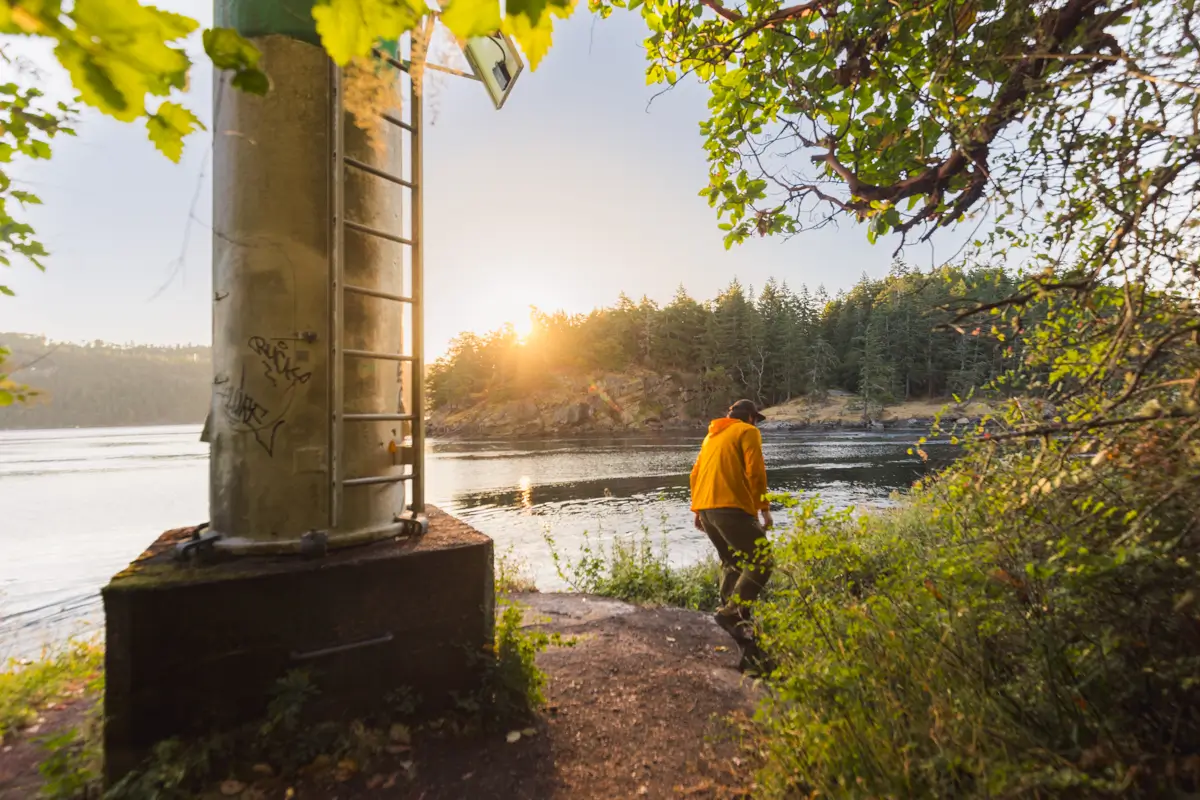
Mudge Island comes into view, with Dodd Narrows between us.
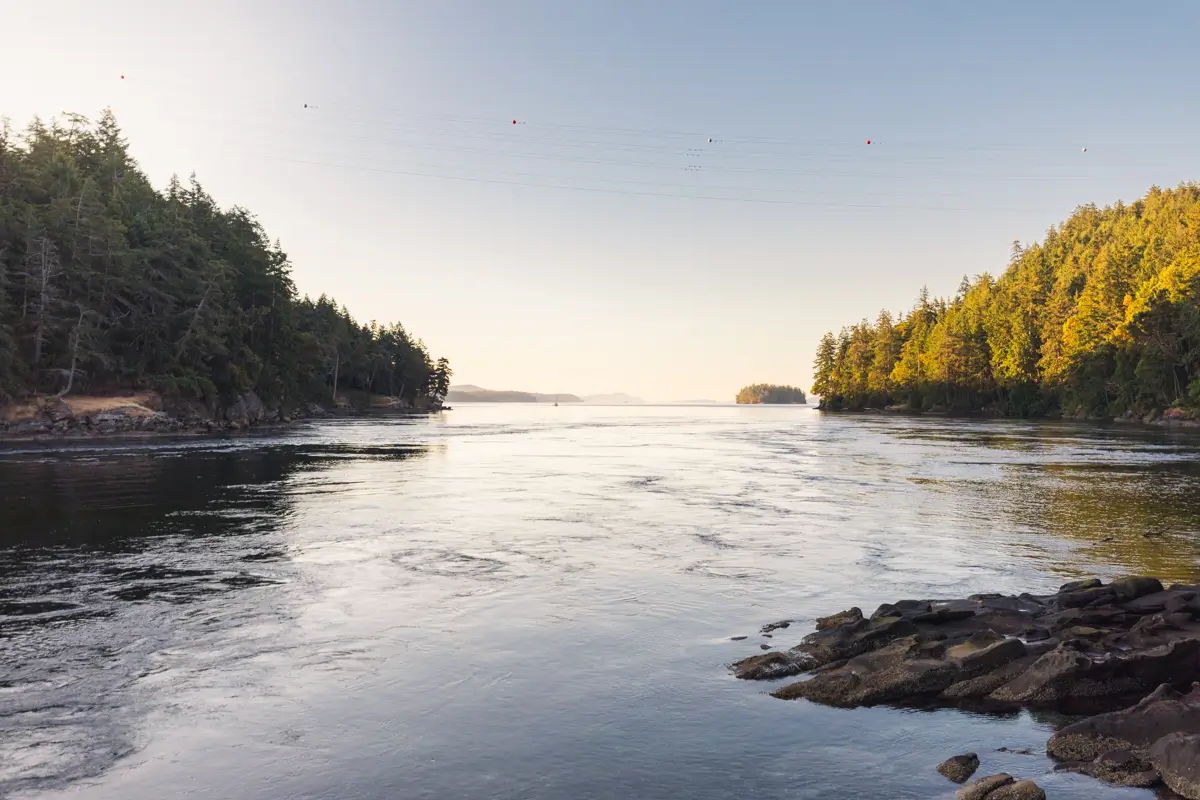
The waters here zoom past, and the area is known for frequent sightings of sea lions, sea otters and killer whales. I wasn’t so lucky, but even though the tide was high I did glimpse plenty of anemones in the rocks. From here, the trail turns to the right and heads back into the woods, completing the loop.
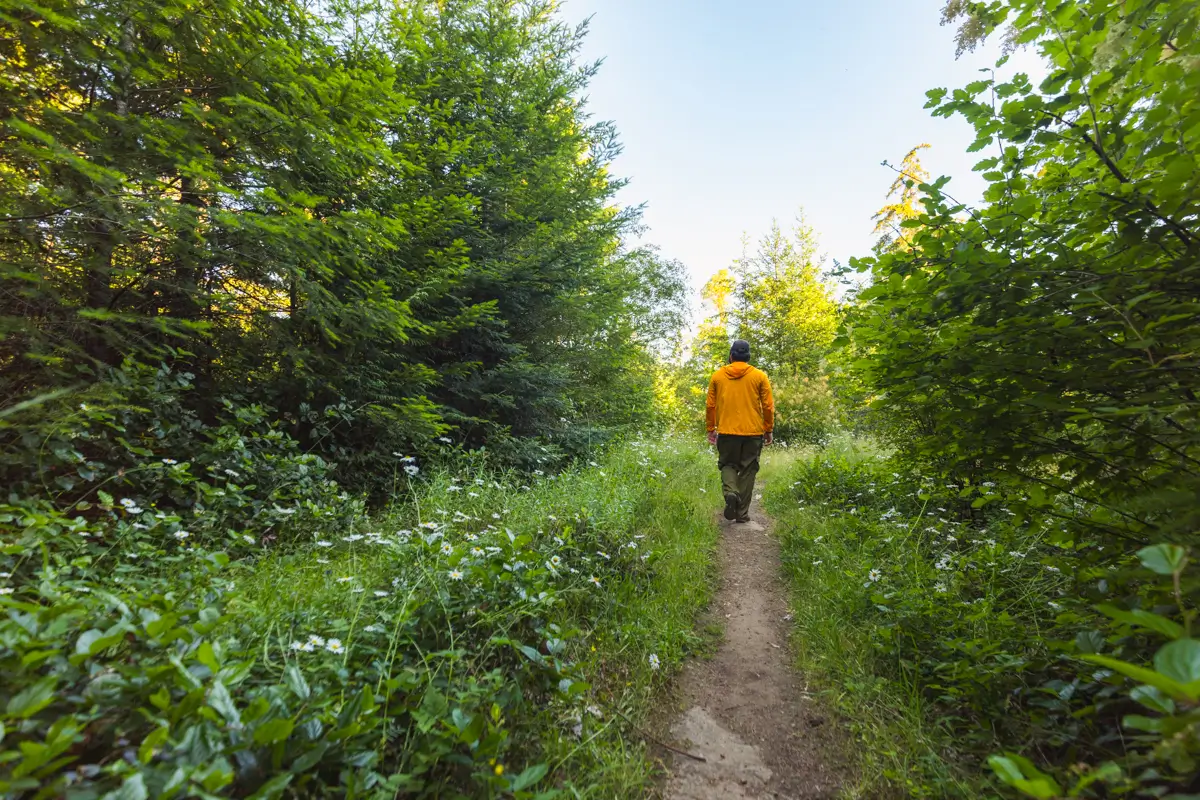
Returning via the loop trail. Keep an eye out for one of the largest Douglas firs in the Nanaimo area , which is impossible to miss on the right side of the trail.
Recommended Hiking Gear



Water is a must whenever I’m hiking, especially if the sun is going to be out. My favourite water filter I’ve used is the Katadyn BeFree 0.6L, which unlike other water filters I’ve used packs up really small and lightweight. For hikes where I know there won’t be any readily available water sources along the way, I make sure to bring my own. The Hydrapak Stow 1L bottle is my go-to, for the same reason that it’s made of a soft plastic that folds up and doesn’t take up any more extra space than necessary in my pack. Finally, Aquatabs are another great option for purifying water, with one tablet being suitable for one litre of water. I previously used the Grayl water filter while travelling internationally, and though I found its hard body more convenient for day to day use and easier to drink from, it has a little too much bulk for my fast-and-light style of hiking.



The secret to all my photos of gorgeous sunset and sunrise mountaintop views? A lot of hiking in the dark. And let me speak from personal experience when I say that the last thing that you want to happen when hiking is to be caught in the dark without a headlamp. I used the Black Diamond Spot 400 for years and it worked great – until I lost it on top of a mountain somewhere. The only downside to it was having to worry about the batteries dying, though there’s also a slightly more expensive version that has a rechargeable battery. Nowadays I’m using the Petzl Actik Core, which is a bit pricier than the more budget-friendly Black Diamond, but is also brighter, more comfortable (in my opinion), and has a hybrid power system that is rechargeable but can also take AAA batteries if needed.
You won’t see me using trekking poles on shorter hikes often – but on long hikes and backpacking trips, as well as certain scrambles, they are an absolute lifesaver. I’ve invested in a high quality ultra-lightweight pair of MSR DynaLock Ascent carbon poles which, while pricey, I don’t regret one bit. If you’re not entirely sure how much use you’re going to get out of a pair of trekking poles, the best budget-friendly option would be the Trekology Trek Z 2.0. Amazon does sell a lot of cheaper Made in China-style trekking poles for cheaper, but these usually are much much heavier and not worth buying.
All the best and most long-lasting cables and power banks I’ve ever owned have been Anker. I once had a phone cable from them that lasted me over three years of daily use! That’s why I keep an Anker PowerCore Essential 20K power bank on me. Like many people I use my phone for a lot of stuff when hiking (checking in with family, using online maps, taking photos, flying my drone) so I like to be prepared for that low battery warning by having a backup power source on me just in case.



The only socks I ever buy for myself are from Darn Tough, and I almost always make sure to wear them when hiking. After years of having no problems only wearing these comfortable and rugged socks for hikes, I accidentally wore a pair of no-name socks on a hike last year and ended up with blisters on both feet. Safe to say I’m back to sticking with the Darn Tough. And the best part? They have a lifetime guarantee, meaning that if they ever wear out you can send them back for a brand new pair. For hiking footwear I go between a pair of lightweight approach shoes for quick and dirty mountain ascents or anything involving scrambling and more heavy-duty boots for longer treks. I’ve worn a couple different versions of the lightweight but super durable Arc’teryx Konseal FL 2 approach shoes for a few years now and am very impressed with the durability. I also really like the thick toecap that keeps me protected every time I stumble into a root or large rock. For longer, tougher, or muddier treks I rely on my LOWA Camino EVO GTX, which I find insanely comfortable and made of very high quality.



I wear my Ar’teryx Gamma Lightweight Pants on every single hike I go on, and on many days when I’m not hiking. After several years of abuse they are still holding together extraordinarily well, with only a few small holes from where I’ve fallen down and some slight stains from being repeatedly coated with mud. They’re lightweight, breathable, and super comfortable. For lightweight and breathable hiking tops I’m a big fan of both the Patagonia Capilene Shirt and the MEC Core Shirt. My Arc’teryx Squamish Hoody shows up in a lot of my photos. It’s super lightweight and packable, and does a great job of cutting the wind while also being pretty breathable. I also have an Arc’teryx Atom Hoody and Arc’teryx Beta LT that I pull out for cooler or wetter conditions.
I hope you enjoyed this guide to hiking the Cable Bay Trail near Nanaimo! Feel free to leave any questions in the comment section below or to contact me directly via social media.
